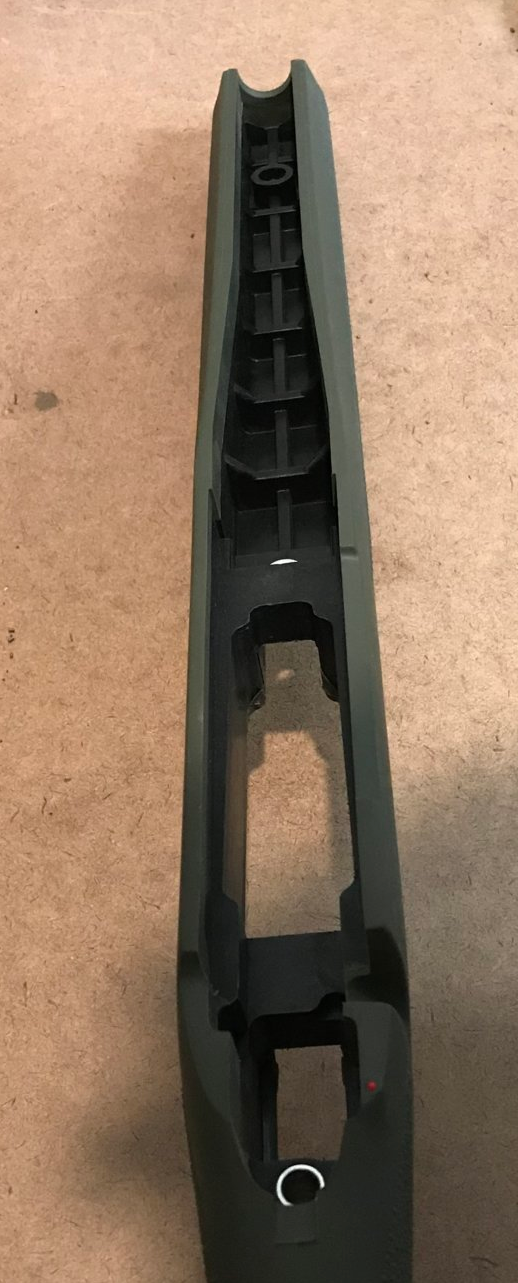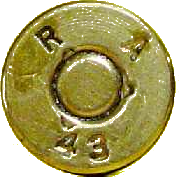Ysterhout Dot Net
Stiffening the Hogue Stock for Howa
Howa rifles with synthetic stock ship with a Hogue rubber stock. This stock has a flexible fore-end, and most people just discard it for a better one.

The stock is made of a hard plastic, overmoulded with rubber. For most people who use the rifle for hunting, the stock is adequate. When a bipod is attached to the fore-end, the limitation of the stock due to flex becomes apparent.
With a bipod attched and in use, the fore-end is so flexible that it is impossible to keep the crosshairs still.
Everyone who has tried to stiffen this stock and keep the barrel free-floated has only improved the stiffness marginally, and I expect all who tried that way will have eventually replaced their factory stocks, because partially stiffening the fore-end does not eliminate the jittery cross-hairs shooting off a bipod.
I decided to go a different route : totally eliminate flex with a full length bedding job.
Full length bed ? Yes. You may now ask why, seeing as everything is free floated these days, and free floated is perceived as being inherently more accurate.
This is how I see it :
- In the old days, when stocks were only made of wood, people sometimes found that free floating a barrel improved their rifle accuracy.
- The reason for the increase in accuracy by free-floating was by virtue of
- eliminating any high-spot barrel contact introduced in the manufacturing process that interferes with the point of aim
- eliminating the effect of warpage of the wood due to atmospherics, causing high-spot barrel contact to shift the point of aim
- In wooden stocked rifles the rifle remained accurate where
- the wood did not warp, or was stable and
- there were no high spots from the manufacturing process
- Free floating was a technique to introduce a gap between the stock and the barrel, so that in the event of high-spots from manufacture or the stock warping slightly under the effects of heat and humidity, the stock could not apply pressure to the barrel at any point, point of aim would not change, and accuracy would not be affected.
- If you have a stock made from a material that does not warp, is moulded to the barrel contour and is temperature and humidity stable, there is no practical benefit of having it free floated.
- Manufacturers of synthetic stocks are producing for free-float perhaps without understanding that the material used makes free-float redundant.
That is the premise on which the full length bedding of the Hogue rubber stock is performed. The stock is plastic and rubber - impervious to distortion by atmospheric heat and humidity. The material the stock is made from means it is moulded to shape, therefore it will not have any high-spots from manufacture to affect the barrel.
A side-effect of this full length barrel bed in a synthetic stock is the dampening of barrel vibration between successive shots. Barrel vibration is a thing - many precision shooters use a barrel tuner to minimise it.
 Stiffening the Howa Hogue Stock
Stiffening the Howa Hogue Stock


